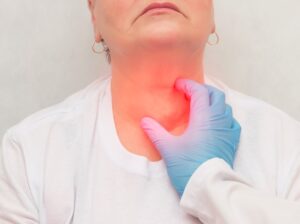"Depression: let’s talk" says WHO, as depression tops list of causes of ill health
Depression is the leading cause of ill health and disability worldwide.

Depression is the leading cause of ill health and disability worldwide. According to the latest estimates from WHO, more than 300 million people are now living with depression, an increase of more than 18% between 2005 and 2015. Lack of support for people with mental disorders, coupled with a fear of stigma, prevent many from accessing the treatment they need to live healthy, productive lives.
The new estimates have been released in the lead-up to World Health Day on 7 April, the high point in WHO’s year-long campaign “Depression: let’s talk”. The overall goal of the campaign is that more people with depression, everywhere in the world, both seek and get help.
Said WHO Director-General, Dr Margaret Chan: “These new figures are a wake-up call for all countries to re-think their approaches to mental health and to treat it with the urgency that it deserves.”
One of the first steps is to address issues around prejudice and discrimination. “The continuing stigma associated with mental illness was the reason why we decided to name our campaign Depression: let’s talk,” said Dr Shekhar Saxena, Director of the Department of Mental Health and Substance Abuse at WHO. “For someone living with depression, talking to a person they trust is often the first step towards treatment and recovery.”
Urgent need for increased investment
Increased investment is also needed. In many countries, there is no, or very little, support available for people with mental health disorders. Even in high-income countries, nearly 50% of people with depression do not get treatment. On average, just 3% of government health budgets is invested in mental health, varying from less than 1% in low-income countries to 5% in high-income countries.
Investment in mental health makes economic sense. Every US$ 1 invested in scaling up treatment for depression and anxiety leads to a return of US$ 4 in better health and ability to work. Treatment usually involves either a talking therapy or antidepressant medication or a combination of the two. Both approaches can be provided by non-specialist health-workers, following a short course of training, and using WHO’s mhGAP Intervention Guide. More than 90 countries, of all income levels, have introduced or scaled-up programmes that provide treatment for depression and other mental disorders using this Intervention Guide.
Failure to act is costly. According to a WHO-led study, which calculated treatment costs and health outcomes in 36 low-, middle- and high-income countries for the 15 years from 2016-2030, low levels of recognition and access to care for depression and another common mental disorder, anxiety, result in a global economic loss of a trillion US dollars every year. The losses are incurred by households, employers and governments. Households lose out financially when people cannot work. Employers suffer when employees become less productive and are unable to work. Governments have to pay higher health and welfare expenditures.
Associated health risks
WHO has identified strong links between depression and other noncommunicable disorders and diseases. Depression increases the risk of substance use disorders and diseases such as diabetes and heart disease; the opposite is also true, meaning that people with these other conditions have a higher risk of depression.
Depression is also an important risk factor for suicide, which claims hundreds of thousands of lives each year. Said Dr Saxena: “A better understanding of depression and how it can be treated, while essential, is just the beginning. What needs to follow is sustained scale-up of mental health services accessible to everyone, even the most remote populations in the world.”
Depression is a common mental illness characterized by persistent sadness and a loss of interest in activities that people normally enjoy, accompanied by an inability to carry out daily activities, for 14 days or longer.
In addition, people with depression normally have several of the following: a loss of energy; a change in appetite; sleeping more or less; anxiety; reduced concentration; indecisiveness; restlessness; feelings of worthlessness, guilt, or hopelessness; and thoughts of self-harm or suicide.




















